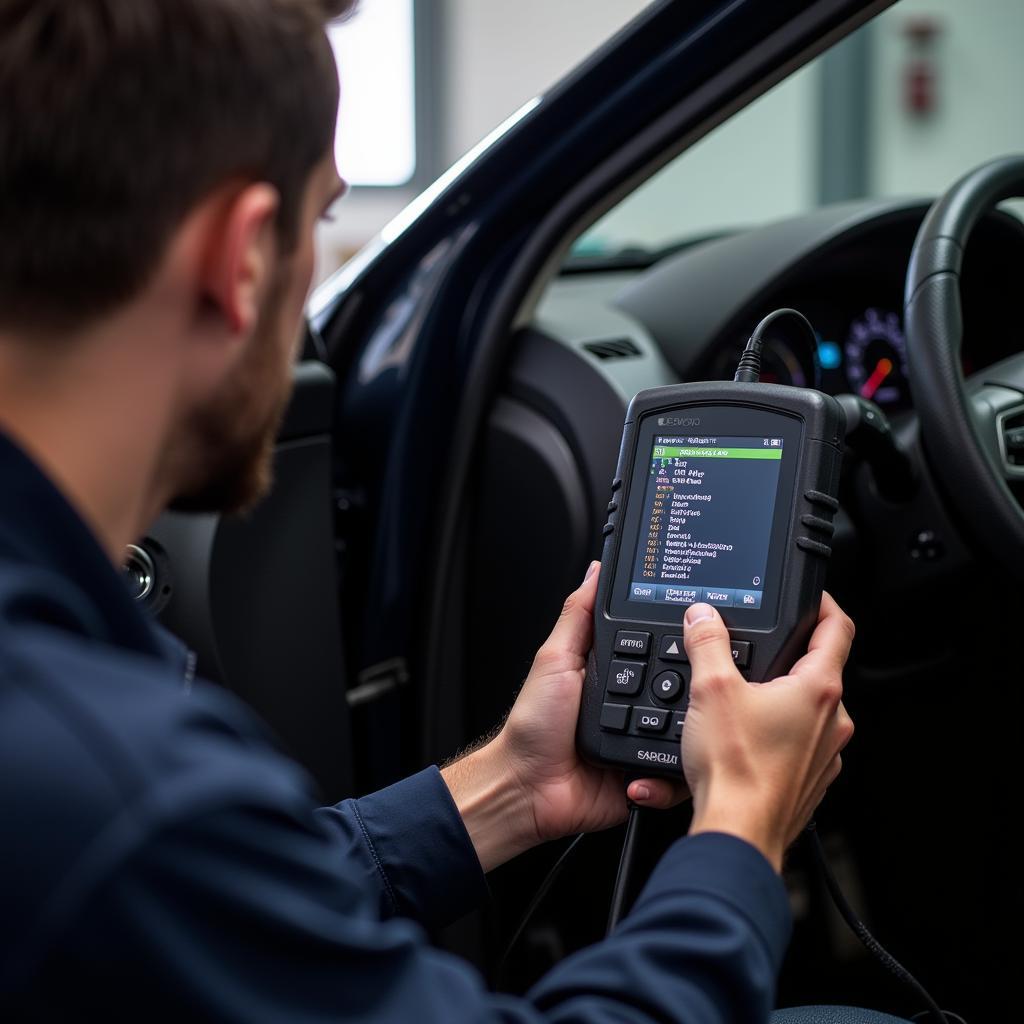You replaced the car battery, expecting a roar of life, but were met with… nothing. A dead car, even after a new battery, is frustrating. This article dives deep into why your replaced battery car still won’t start and offers solutions, from simple checks to more advanced diagnostics.
Common Reasons a Replaced Battery Car Won’t Start
Several culprits could be at play when your replaced battery car still won’t start, even with a brand new power source. Let’s explore some of the most common reasons:
- Faulty Battery Terminals: Corrosion or loose connections can prevent power from flowing, even with a new battery. Check for any buildup and ensure the terminals are tightly secured.
- Bad Starter Motor: The starter is responsible for cranking the engine. If it’s faulty, a new battery won’t make a difference.
- Alternator Issues: A failing alternator can drain a new battery quickly. Even if the car starts initially, it might die soon after if the alternator isn’t charging.
- Parasitic Drain: Something in your car might be drawing power even when the ignition is off, draining your new battery. This could be anything from a faulty interior light to a malfunctioning radio.
- Wiring Problems: Damaged or corroded wiring can disrupt the flow of electricity from the battery to the starter.
- Ignition Switch Problems: The ignition switch supplies power to vital components. A malfunctioning switch can prevent the car from starting.
- Fuel Pump Failure: While not directly related to the battery, a failing fuel pump can prevent the car from starting and might lead you to believe it’s a battery issue.
- Key Fob Battery: It’s possible your key fob battery is dead, preventing the car from starting. This is especially common in modern cars with keyless ignition systems. Consider replacing the battery in your key fob, just like you would replace battery in honda key fob.
Troubleshooting a Car That Won’t Start After Battery Replacement
Here’s a step-by-step guide to diagnose why your replaced battery car still won’t start:
- Check the Battery Terminals: Inspect for corrosion and clean them with a wire brush. Ensure they are tightly connected.
- Test the Battery Voltage: Use a multimeter to verify the battery has the correct voltage (around 12.6 volts).
- Inspect the Starter: Tap the starter motor lightly with a hammer while someone tries to start the car. Sometimes, a stuck starter can be temporarily freed this way.
- Check the Alternator: With the engine running (if possible), use a multimeter to check the alternator’s output voltage (around 14 volts).
- Look for Parasitic Drains: With the car off and all accessories off, disconnect the negative battery cable and connect a multimeter in series. A reading above 50 milliamps might indicate a parasitic drain.
- Examine the Wiring: Inspect for any damaged or corroded wires, particularly those connected to the starter and alternator.
- Test the Ignition Switch: Use a multimeter to test the ignition switch for continuity in different positions.
“A common mistake people make is assuming a new battery automatically solves the problem. Always diagnose the entire starting system,” advises John Smith, ASE Certified Master Technician.
What if I Still Can’t Start My Car?
If you’ve followed these steps and your replaced battery car still won’t start, you might be dealing with a more complex issue. In this case, consider getting a professional diagnostic evaluation. They have the specialized tools and knowledge to pinpoint the problem accurately. Perhaps you need to jump-start your car like in this guide: jumping a car with a dead battery.
Could it be my Key Fob?
Yes, a dead key fob battery can prevent your car from starting, especially with keyless ignition systems. Check your car’s manual for instructions on how to start the car with a dead key fob or consider 2018 jeep grand cherokee key fob battery as a helpful example.
 Car Diagnostic Scanner in Use
Car Diagnostic Scanner in Use
“Remote diagnostics and software installations are becoming increasingly important in modern car repair, allowing technicians to address software-related starting issues remotely,” states Jane Doe, Automotive Electrical Engineer specializing in remote diagnostics.
Conclusion
A replaced battery car still not starting can be a real headache. By methodically checking the most common culprits and following the troubleshooting steps outlined, you can often pinpoint the issue and get back on the road. If the problem persists, seeking professional help is the best course of action, ensuring a quick and accurate diagnosis and repair. You might even want to explore resources like jumping a dead battery or investigate if my battery keeps draining.
FAQ
- Can a bad alternator drain a new battery? Yes, a faulty alternator won’t charge the battery, eventually leading to a dead battery, even if it’s new.
- How do I check for a parasitic drain? Disconnect the negative battery cable and connect a multimeter in series. A reading above 50 milliamps suggests a parasitic drain.
- What voltage should a car battery read? A fully charged car battery should read around 12.6 volts.
- Could it be the starter if my car won’t start after replacing the battery? Absolutely. A faulty starter prevents the engine from cranking, even with a new battery.
- How long does a car battery last? Typically, car batteries last between 3 and 5 years, but various factors can affect their lifespan.
- Should I disconnect the battery if my car won’t start? Disconnecting the negative terminal can prevent further drain if there’s a parasitic drain and can also be a safety precaution when working on electrical components.
- What if I replaced the battery and the car still clicks when I try to start it? This often indicates a low battery charge or a bad starter.

